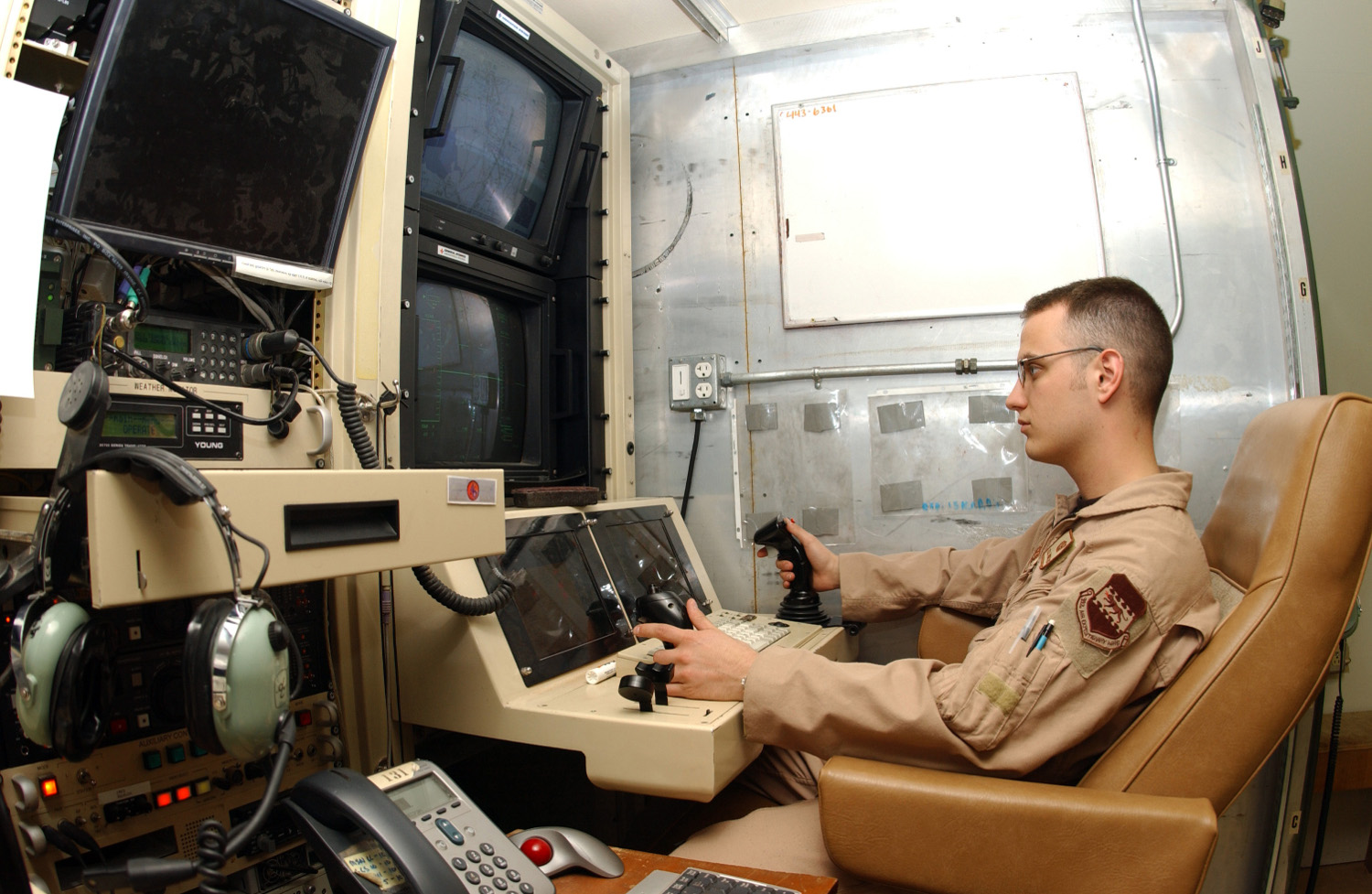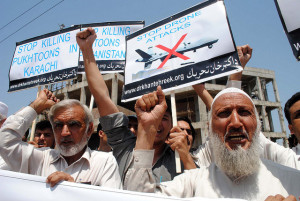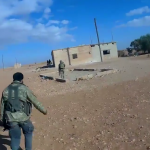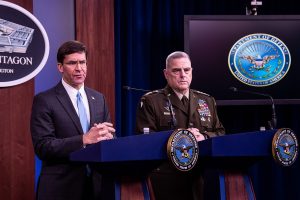by David Isenberg
Back in April I wrote about growing involvement of private contractors in unmanned aerial systems. Only half tongue-in-cheek I wrote:
Yes, it’s PDCs—strange visitors from planets SAIC, BAE, CACI and others in galaxy Androneda—who came to Earth with powers and abilities far beyond those of ordinary servicemen. PDCs—enablers of targeted killings. Champions of covert counterterrorist strikes, valiant, courageous fighters against the forces of “inherently governmental” federal employees, who, disguised as Dark Rents, mild-mannered contractors for great metropolitan corporations, fight a never-ending battle for secrecy, obscurity and the American cost-plus contract.
But that might not have been the best reference to use. After all, private contractors are very much a homegrown, not extraterrestrial, life form. Having had some time to study the intervening news and reflect, I think a more apt metaphor may be Charles Darwin, specifically the trait of adaptation that Darwin cited to explain the diversity of species we see in the world around us.
If you think of the market economy as a living being then one must give it credit for the staggering diversity of groups within it. While, to date, nobody has attempted a full taxonomic classification of the PMOCD (Privatus Militaris Obsess Contraho Diligentia), this private military and security contracting industry has managed, with great vigor, to adapt itself to various market niches over the past few decades—from logistics to shooters—and in varied locales from the Balkans and to Iraq to Afghanistan, Africa, and Latin America. Indeed, as a genus, its geographic range is global.
Enter the Drone
And, now it seems inarguable that the PMOCD has spawned a new subspecies, the Private Drone Contractor or PDC (note: since the Greeks didn’t actually have planes, let alone unmanned ones, there is no Latin equivalent so we’ll just have to go with the English substitute).
Although it may be a new subspecies, the PDC shares traits with the other terrestrial and nautical members of its genus.
Just as in the early years of land- and sea-based contractors, there is a distinct lack of oversight and accountability of the PDC. Back in July, Professor Laura Dickinson of George Washington University Law School wrote:
the growing numbers of contractors in drone operations, while little discussed, raise significant concerns about oversight and accountability at a time when drone use is set to accelerate. We simply don’t know enough about how contractors will be used in the increasingly automated version of war that appears to be our future.
PDC defenders—and yes, there are many—argue that the PDC does not actually operate drones that drop bombs and that such actions still remain the province of regular military personnel. But it is not that clear-cut. Dickinson noted that:
Contractors do operate smaller Air Force surveillance drones, like the Scan Eagle and the Raven. The pilots of these drones often work in theater, controlling the vehicles from the ground and collecting intelligence information that then serves as the basis for targeting decisions.
To see why even this level of contractor involvement could be a problem, consider a 2010 incident in the Oruzgan province of Afghanistan. Hellfire missiles launched from an Air Force Predator killed 15 Afghan civilians and injured a dozen more traveling near US special operations forces who were conducting a capture mission. Subsequent investigations revealed that, although military personnel were operating the drone and the ground force commander made the decision to strike, the decision to fire was largely based upon an intelligence analysis that a civilian contractor had provided.
Indeed, when it comes to lack of oversight and accountability the PDC may very well end up leaving other sub-species in the Iraqi dust, so to speak. If you thought keeping tabs on the likes of KBR and Blackwater was hard, you ain’t seen nothing yet. Dickinson observes that:
Lack of transparency about the role of drone contractors hinders effective oversight. The fact that some contractors perform imagery analysis that may contribute to targeting decisions is not a problem in and of itself. But it becomes problematic if the contractors are effectively making the targeting decisions. The contracts’ terms may forbid them from doing so, and may require governmental personnel to supervise the contractors. But if the ratio of contractors to governmental personnel grows too large, the supervision ban could be rendered meaningless. This is particularly true when the contractors are seen as having expertise or experience that the uniformed military personnel lack, leading to an undue reliance on the contractors’ interpretations and recommendations. That’s why at the very least the Defense Department ought to report on the breakdown and roles of contractors involved in operating drones as part of its quarterly report on contracting. The public shouldn’t have to rely on piecemeal investigative journalism to get a glimpse of the contractor function here. And that’s also why, especially now that mandate of the Special Inspector General for Iraq Reconstruction (SIGIR) has lapsed, we need a permanent inspector general to monitor contractor activity.
Second, if a drone contractor were to commit a crime, accountability remains a big issue, particularly for CIA contractors operating overseas. The very jurisdiction of U.S. courts to consider such cases remains unclear because the primary applicable statute, the Military Extraterritorial Jurisdiction Act, only applies crimes committed by DOD contractors or those whose employment relates to a DOD mission. Thus, contractors such as the State Department security contractors implicated at Nisour square or CIA contractors operating drones overseas do not easily fall within US courts’ jurisdiction. The proposed Civilian Extraterritorial Jurisdiction Act, which would close this loophole and clarify that contractors for all agencies could be subject to prosecution, has been languishing on Capitol Hill for years. The bill would also provide for better inter-agency coordination of investigations. Indeed, even many in the industry support it because contract firms have realized it’s actually good for business to ensure that rogue actors are punished.
In addition to criminal punishment, the tort system also plays an important role. Yet the legal framework here is in perhaps even more disarray than on the criminal side. Some courts, such as the DC Circuit, have taken an overly broad view of an immunity doctrine that shields contractors from tort liability for battlefield conduct. And the US Supreme Court has interpreted the Alien Tort Statute very narrowly, making it difficult for non-US citizens to sue US contractor firms in US courts. Moreover, with regard to autonomous weapons, the opaque web of decision-making responsibility will likely make it increasingly difficult to trace accountability to specific actors. As such, though the tort system should provide some accountability for contractor abuse, significant legislative reform is necessary to fulfill that promise.
Overlapping Resources
Also, just like in the early years for the other subspecies, only a few companies do the bulk of PDC work.
Earlier this year, the Guardian newspaper and Bureau of Investigative Journalism reported on the contracting histories of eight companies that have provided the Pentagon with imagery analysts in the past five years. These included such companies as SAIC, MacAulay-Brown, Zel Technologies, General Dynamics, Transvoyant (formerly Portal Dynamics), Intrepid Solutions and Services, L-3 Services, and Worldwide Language Resources.
Another common trait the PDC shares with other sub-species is its ability to obtain ample resources to allow it to live the good life. The Bureau reported that both airmen and officers, who become eligible to work as private contractors after they complete their military service, can be paid twice as much for the same work and get the added bonus of picking their hours and work locations. (The Air Force Times estimates that drone maintenance pilots stationed overseas who work for companies like Raytheon can make as much as $225,000 a year.) Since the military provides all the initial training and the security clearances, all the contractors are required to do is recruit Air Force veterans and then put them on their payrolls.
Yet another common trait is the PDC’s ability to absorb former highranking military officers who previous were involved in drone operations, as part of it lifecycle development. Once absorbed, these formers officers are transformed into Private Mentoring Contractors. For example, Vice reported that ex-General James Mattis is on the board of General Dynamics. General Dynamics is a drone manufacturer and has held a contract for analyzing footage from drones.
Of course, the rise of the PDC would not be possible without a hospitable environment. Here too, the PCD shared the same favorable conditions for growth as its related sub-species: namely, the protective and nurturing ideology of neoliberalism, which is the wellspring of privatization and outsourcing nutrients so vital to PDC growth.
In late summer, U.S. News & World Report reported that “Private contractors may play a more significant role in armed drone warfare in the coming years, thanks to a Pentagon plan designed to drastically boost the ranks of drone operators.”
This month CorpWatch reported that:
U.S. Air Force officials has begun to hire private companies to fly drone aircraft operating over Afghanistan, Iraq and Syria. The unprecedented move is in response to demands from the Obama administration to dramatically expand the drone war just as the Pentagon faces a critical shortage of military pilots.
As a result, civilian pilots will directly participate in military operations for the first time since the drone wars began about a decade ago. According to the Los Angeles Times, the Air Force signed contracts with two private companies in 2015 to provide enough pilots to fly two “combat air patrols” or 24-hour surveillance flights that would involve as many as eight MQ-9 Reaper drones per day. The Air Force plans to eventually expand its fleet of privately piloted drones to 40 over the next four years.
All told, the prognosis for this new species looks quite promising. No doubt Darwin and the military-industrial-contracting complex are quite pleased.






Privatisation – i.e., selling off the people’s assets – is the essence of neoliberalism. And ever since prospective entrepreneurs, slack jawed, watched as government coughed up trillions and trillions of dollars for two wars of choice and for busted Wall Street banks and insurance companies, it has been abundantly clear to them that Uncle Sam is a bottomless well of potential private wealth.
Everyone from “SAIC, MacAulay-Brown, Zel Technologies, General Dynamics, Transvoyant (formerly Portal Dynamics), Intrepid Solutions and Services, L-3 Services, and Worldwide Language Resources” to Booz Allen, who’s primary role it is to dream up and sell ever more programs of surveillance in order to grow its enterprise for the sake of stockholders, knows that neoliberalism’s first priority since Reagan, the original neoliberal president, has been the selling off of government and its services. (Social Security would long ago have been in the hands of private money managers, were the AARP not the equal of the NRA and AIPAC in terms of their super-powerful lobbies.)
As useful as it is for scholars and journalists to expose the lack of oversight and accountability of mercenaries, the real problem is the extent to which government for the people, of the people, by the people has perished from the earth. Not until Congress and the White House – themselves a body of mercenaries thanks to Citizens United – address the bankruptcy of American democracy can the problem even begin to be addressed.